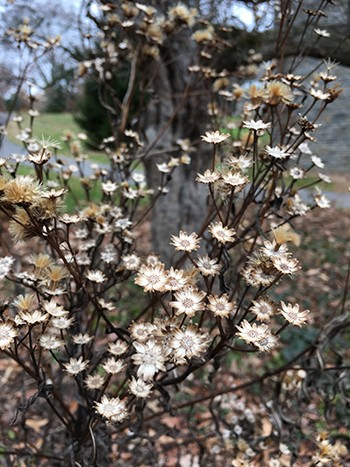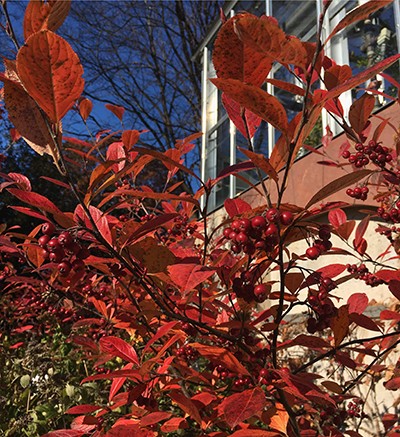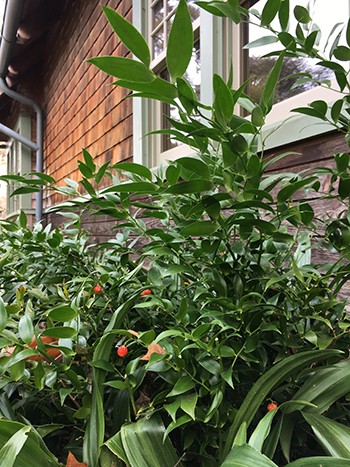Reclusive botanist George W. Letterman was twice offered Harvard professorships. He declined the “temptation” preferring the woods around his one-room log cabin. Fellow botanists and scientists came from far and wide to botanize with Letterman.
Vernonia lettermannii, currently in the midst of scattering this season’s seed in the Biostream, is but one plant named in Letterman’s honor. Vernonia is a large genus with upwards of a thousand known species and subspecies.
Vernonia lettermannii ‘Iron Butterfly’ is a favorite at the Arboretum. Originating in Dr. Allan Armitage’s trials at the University of Georgia, this cultivar was selected for its vigorous growth, compact habit, and floriferous nature. Interestingly, unlike most other members of the Aster Family, Vernonia flowers are composed only of ray florets with no disc. Butterflies, moths, and native bees are all attracted to the bright purple flowers. Consider pairing Vernonia with grasses, Asclepias, Monarda, and Rudbeckia. Photo credit: J. Coceano
While this season’s fall color was overall lackluster, Aronia arbutifolia ‘Brilliantissima’ didn’t fail to impress. ‘Brilliantissima’ is a compact selection of the native shrub noted for its clusters of white spring flowers, larger and more prolific fruit set compared to the species, and brilliant red fall color. The fruits are edible but extremely tart. Birds and other wildlife wait to consume the fruit until after several hard freezes.
Not only does ‘Brilliantissima’ boast multiple seasons of interest, it requires minimal care. The deciduous shrub looks especially attractive en masse within a shrub border or woodland setting. Capable of withstanding wet feet, ‘Brilliantissima’ is a good candidate for the margins of ponds or streams. Photo credit: J. Coceano
One of the joys of working with plants is not only learning about new genera, species, and varieties but also growing them successfully. Danae racemosa, the poet’s laurel, is a monotypic genus of plants with a long history in Greek and Roman mythology. Danae was bestowed as praise for a victory or great achievement in the form of a laurel crown. Woven wreaths were conferred upon revered members of society who, if they then lived off of their past glories, were said to be “resting on their laurels.”
While a bit more common in the southern United States, Danae racemosa is uncommon in the mid-Atlantic. Florists and flower arrangers appreciate poet’s laurel for its amazing durability as a cut foliage element. Most of the commercially available Danae is flown in weekly from Italy where it is grown in large scale commercial operations.
Interestingly, Danae is an evergreen plant with no leaves. The leaf-like parts along it stems are actually cladodes, or flattened sections of the stem. A specimen can seen growing as a foundation plant along the Wister Center. Photo credit: J. Coceano
by Josh Coceano



